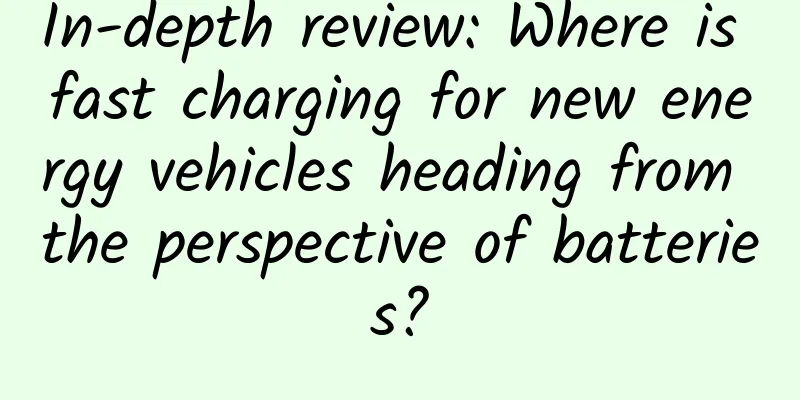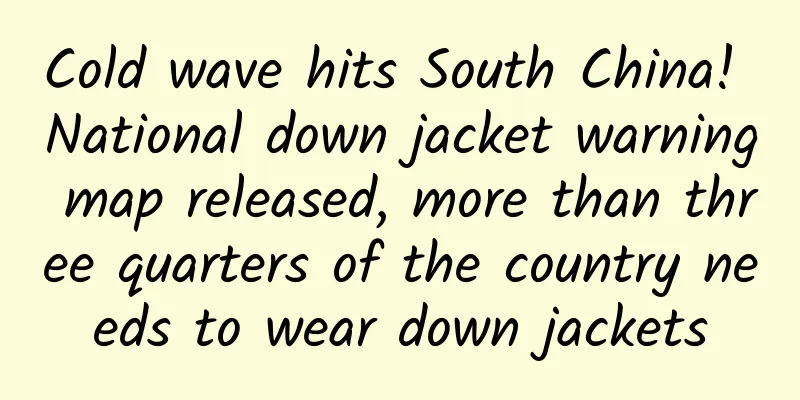In-depth review: Where is fast charging for new energy vehicles heading from the perspective of batteries?

|
1. Fast charging trends of batteries with different technical routes When using electric vehicles, consumers are most concerned about the charging time and driving range. Under the current technical level, it is difficult to achieve both charging time and driving range. Therefore, two routes have been developed for power batteries. One is the energy-specific faction that focuses on driving range, which mainly increases the driving range of electric vehicles by continuously improving the energy-specific capacity of lithium-ion batteries. The second is the fast-charging faction that focuses on reducing charging time, which mainly shortens the charging time of electric vehicles by improving the fast-charging performance of lithium-ion batteries. With the advancement of technology and in-depth research on lithium battery materials, the problems that fast-charging technology once encountered may be solved one by one. ●What is “Deep Comments on the Way”? "In-depth Comments and Questions" is the first column created by Autohome for industry users. It is written by senior practitioners in the automotive industry and exclusively analyzes/revealed major industry events. In addition to the lively appearance, we want to present you with the exploration and thinking of the essence of things, cause and effect, and future possibilities. This issue’s industry commentator is Shi Chenxing, an independent commentator and investor who focuses on investment, mergers and acquisitions, and post-investment management in the new energy vehicle industry chain. He is currently the general manager of Xujiang Technology of Dongxu Group. Read the full text in 30 seconds: ●Based on opinions from various parties, we can define a charging rate less than 1.6C as slow charging, 1.6C-3C as slow fast charging, and 3C and above as fast charging. 1. How to understand fast charging? To understand fast charging, we can't escape a professional term - the charge and discharge rate C, which can be simply understood as the rate of charge and discharge. The charge and discharge rate of lithium-ion batteries determines how quickly we can store a certain amount of energy in the battery, or how quickly we can release the energy in the battery. According to the 2018 new energy vehicle subsidy policy, electric buses with a charging rate less than 3C are classified as non-fast charging pure electric buses, while electric buses with a charging rate higher than (including) 3C are classified as fast charging pure electric buses. However, the fast charging subsidy classification is only for new energy buses, and there is no standard for passenger cars and logistics vehicles.
According to the industry and CATL's definition, electric vehicle fast charging refers to a charging method with a charging current greater than 1.6C, that is, a technology that charges from 0% to 80% in less than 30 minutes. Based on opinions from various parties, the author proposes that a charging rate less than 1.6C is slow charging, 1.6C-3C is small fast charging, and 3C and above is fast charging. Most electric passenger cars can achieve "small fast charging", while the charging rates of fast-charging buses are mostly concentrated in 3C-5C. If we compare a lithium-ion battery to a rocking chair, the two ends of the rocking chair are the two poles of the battery, and the lithium ions are like excellent athletes, running back and forth between the two ends of the rocking chair. When charging, lithium ions are generated on the positive electrode of the battery, and the generated lithium ions move to the negative electrode through the electrolyte. The carbon as the negative electrode has a layered structure, and it has many micropores for the lithium ions that reach the negative electrode to embed. The more lithium ions are embedded, the higher the charging capacity. During fast charging, lithium ions need to be accelerated and instantly embedded into the negative electrode. This poses a great challenge to the negative electrode's ability to quickly receive lithium ions. Batteries with ordinary chemical systems will produce byproducts at the negative electrode during fast charging, affecting the cycle and stability of the battery cell. Energy density and power density can be said to be two directions that are mutually exclusive in the same battery. Whether it is national policy orientation or corporate technology layout, high energy density is generally pursued. When the energy density of the power battery is high enough and the power load of a car is large enough, the so-called "mileage anxiety" can be avoided, and the demand for fast charging will be reduced. However, if the cost is not reduced, it will be difficult to be accepted by the market. Therefore, if the cost of the battery can be controlled, the user's anxiety can be greatly alleviated with convenient charging capacity + applicable cruising range, so that fast charging has value. 2. Application prospects of fast charging of batteries with different technical routes The speed of charging is closely related to the overall technology and design requirements of power batteries, charging piles, electric vehicles, power grids, etc., among which the biggest influencing factor is the battery. Let's discuss the application trends of different types of power batteries in the direction of fast charging technology. Almost all kinds of positive electrode materials can be used to manufacture fast-charging batteries, but their applicability and advantages and disadvantages vary. 1. Ternary fast-charging batteries are more suitable for electric passenger cars Ternary batteries are more valued because of their higher energy density. The material itself has excellent conductivity, but the reaction activity is too high, which poses a greater challenge to fast charging safety. Representative companies of the ternary battery fast charging system include CATL, BAK, etc. CATL has developed the "superconducting electronic grid" and "fast ion ring" technologies, which can achieve SOC charging from 5% to 85% within 15 minutes, with an energy density of 190Wh/kg and a cycle life of more than 2,500 times. The main application area is passenger cars, and it is expected to have mass production capabilities in 2018. The 3.0 high-energy cell newly launched by BAK in May this year has an energy density of nearly 250Wh/kg by introducing silicon-based negative electrode materials, high-nickel positive electrode materials, and specially developed electrolytes, which can achieve an ultra-long range of 500 kilometers. Through the design of charging strategies, the charging time is effectively shortened and the charging efficiency is improved. In extreme emergency mode, charging for 10 minutes can travel 60 kilometers. According to the usage habits of fuel vehicles, to fully charge within 10-20 minutes, the charging rate must be at least 3-6C. Currently, most pure electric passenger cars on the market can be fully charged to 80% in half an hour to an hour, which is much faster than the previous two or three hours. In the future, it is expected to be further compressed to within 20 minutes.
2. Lithium iron phosphate fast charging is available for both passenger and commercial vehicles Lithium iron phosphate does not have an inherent advantage in the field of fast charging. From the material point of view, the intrinsic conductivity of lithium iron phosphate material is relatively low, only one percent of that of ternary materials. The conductivity of lithium iron phosphate materials needs to be optimized to meet the needs of fast charging. However, the material cost of lithium iron phosphate is relatively low. Combined with mature technical background and stable product performance, it has a relatively broad application prospect. Representative companies include CATL, Watma, etc.
Limited by the extreme value of theoretical energy density, lithium iron phosphate has little room to play in terms of energy density in the future. However, for commercial vehicles such as buses, logistics vehicles, and special vehicles that have already adopted the lithium iron phosphate system, it is not necessary to improve the energy density, and fast charging is increasingly showing its importance. 2. Market status and prospects of fast charging products 3. Lithium manganate batteries are suitable for plug-in hybrid buses Lithium manganese oxide batteries have the characteristics of power performance, discharge rate performance, good low temperature performance, and high voltage frequency. In addition, with the soaring price of upstream raw materials of ternary materials, the cost advantage of lithium manganese oxide is gradually becoming more prominent. However, there is still a need to improve energy density and high temperature performance. In recent years, the proportion of lithium manganese oxide fast-charging batteries in the field of plug-in hybrid buses has increased significantly, with representative companies such as CITIC Guoan Mengguli, Yipeng New Energy, and Microvast Power.
However, the cycle performance of lithium manganese oxide batteries is poor under high temperature conditions. The high temperature performance of lithium manganese oxide batteries can be improved by positive electrode doping, but the modified lithium manganese oxide material is no longer the "original lithium manganese oxide". The industry often uses "multi-composite materials", with a mixed system of ternary materials and lithium manganese oxide for the positive electrode and porous composite carbon for the negative electrode to further improve the performance of fast charging, but safety still needs to be focused on and continuously improved. 4. Lithium titanate fast-charging battery is suitable for pure electric buses Lithium titanate power batteries are named after the negative electrode material, and the positive electrode uses ternary materials. Zhuhai Yinlong, Microvast Power, and Tianjin Jiewei are typical companies. In terms of performance, lithium titanate batteries have excellent low-temperature performance, good safety and recycling performance, and their rate performance as fast-charging batteries has also been recognized by the industry. However, there are two prominent problems with lithium titanate at present: First, the energy density is relatively low. Under the pressure of policies and markets that require continuous improvement in energy density, the current market share of lithium titanate is relatively low in the entire power battery market. Second, due to the influence of high-cost small metal materials such as titanium, nickel, and cobalt, the cost of lithium titanate batteries is significantly higher than other systems.
Lithium titanate batteries are significantly better than other fast-charging batteries in terms of cycle life, which is determined by the material's own characteristics, namely the "zero strain" characteristics. However, its disadvantages are obvious, and its energy density is low, which is only about half of that of the ternary system. In addition, the price is relatively high, and it is currently mostly used in fast-charging buses. In the future, it is urgent to seek higher voltage positive electrode materials and matching electrolytes to solve this defect. 5. New direction of fast charging - titanium niobium oxide negative electrode material Titanium niobium oxide is developed based on lithium titanate. Its main advantage is that compared with the theoretical capacity of lithium titanate of 175 mAh/g, the theoretical capacity of titanium niobium oxide is about 280 mAh/g. In October 2017, Toshiba officially announced that it had successfully developed a new generation of automotive lithium-ion batteries, which are expected to be commercially available in 2019. The battery uses titanium niobium oxide materials, which is a disruptive improvement over current technologies such as ternary and lithium iron phosphate. The new battery has the advantages of high energy density and fast charging efficiency. It only takes 6 minutes to charge to 90% of the power and can travel 320 kilometers. Currently, it takes an average of 30 minutes for lithium batteries to charge to 80%. In addition, the concept of "graphene battery" has been quite popular, but there are also controversies in the industry. In lithium battery applications, graphene is mainly used as negative electrode active material and conductive additive. In terms of fast charging capability alone, using graphene as a conductive agent, or using graphene to coat lithium iron phosphate/ternary lithium materials, can achieve better fast charging effects. However, considering the comprehensive cost, process difficulty and other indicators, it is still very challenging. 3. Market prospects of fast charging products High energy density, fast charging, and low price are the ideal power battery products that users are most looking forward to. However, "you can't have your cake and eat it too". Under the existing lithium-ion battery system, the five most important indicators of power batteries, such as rate performance, energy density, life, safety, and price, are fixed in a relatively stable radar chart. If any one indicator is improved, the other indicators will be relatively lost.
At present, fast-charging power batteries are mainly used in new energy buses, because they are highly selective in cities and target units, that is, cities or units with relatively financial support tend to prefer fast-charging battery buses. However, from the perspective of market development potential, the growth rate and market size of passenger cars and special logistics vehicles will be higher than that of buses in the future, so the consumption structure of fast-charging power batteries will shift to these two types of vehicles in the future. According to data from Battery China, in 2017, my country produced 6,486 fast-charging buses, with a battery installed capacity of 597.52MWh, accounting for 6% of the total new energy buses. Among them, the highest charging rate of fast-charging buses is 6.42C. The production of 3C-5C models was 4,771, with a battery installed capacity of 480.68MWh; the production of 5C-10C models was 1,715, with a battery installed capacity of 116.84MWh. At present, the fast-charging rates of fast-charging buses are mainly concentrated between 3C and 5C. In terms of battery type, the battery material of fast-charging buses in 2017 was mainly lithium titanate, with an installed capacity of 571.54Mwh, accounting for 95.65%. According to the shipment volume of four types of power batteries in 2017, 1.54GWh of lithium manganese oxide is partly used in plug-in hybrid vehicles and partly meets the requirements of small fast charging, while 16GWh of ternary battery vehicles partially meets the requirements of small fast charging. Overall, ternary fast charging batteries are suitable for passenger cars, fast charging batteries such as lithium iron phosphate and lithium titanate are suitable for buses, lithium manganese oxide fast charging batteries are suitable for plug-in hybrid vehicles, and titanium niobium oxide may be a new direction for fast charging. As a winner of Toutiao's Qingyun Plan and Baijiahao's Bai+ Plan, the 2019 Baidu Digital Author of the Year, the Baijiahao's Most Popular Author in the Technology Field, the 2019 Sogou Technology and Culture Author, and the 2021 Baijiahao Quarterly Influential Creator, he has won many awards, including the 2013 Sohu Best Industry Media Person, the 2015 China New Media Entrepreneurship Competition Beijing Third Place, the 2015 Guangmang Experience Award, the 2015 China New Media Entrepreneurship Competition Finals Third Place, and the 2018 Baidu Dynamic Annual Powerful Celebrity. | ||||||||||||||||||||||||||||||||||||||||||||||||||||||||||||||||||||||||||||||||||||||||||||||||||||||||||||||||||||||||||||||||||||||||||||||||||||||||||
>>: Huawei releases the latest Internet of Vehicles platform: Digital cars are no longer a dream
Recommend
How does Metaverse Marketing change the advertising industry?
With Facebook changing its name to Meta, the conc...
It became the richest country by selling bird droppings, but it almost went bankrupt because of bird droppings
In 1856, the United States Congress passed the Gu...
In memory of Academician Wu Xinzhi, and on the origin of mankind
On December 4, 2021, Wu Xinzhi, an academician of...
Where does sugarcane come from? Which part is the sweetest? An article on the history of sugarcane
Produced by: Science Popularization China Author:...
Ji'an SEO Training: How to increase the click probability of your website? Develop a comprehensive click strategy for new users
How to trigger more users to click on the website...
How to use email marketing automation tools to enhance software company sales?
SaaS company sales are divided into "interna...
Analysis of the account opening process of Douyin Feed
1. What is Feed Flow 1. What is a feed? Feed stre...
The TV version of the video website has been suspended. Can the license holder take over to meet user needs?
[Editor's Note]: The State Administration of ...
Viral communication case analysis: Why did “Watermelon Footprints” go viral on WeChat Moments?
On May 31, the Moments were suddenly flooded with...
After eating meat for so many years, you still can’t tell the difference between hot fresh meat, cold fresh meat and frozen meat?
In a blink of an eye, 2021 has entered its final ...
10 operational activities to teach you: How to take advantage of the World Cup
The World Cup period is a good time for major pro...
Why Lei Jun rejected Zuckerberg's olive branch
Editor's note: Rather than saying Lei Jun ref...
Analysis of memory overflow and memory leak
[[130745]] We often talk about memory overflow an...
iOS event response chain and event delivery principle
In iOS applications, one of the core mechanisms f...









